Circus is a live performance that features such daring and skillful artists as acrobats, aerialists, clowns, and other performers. Traditional circuses also feature trained animals. Music and dancers in elaborate costumes add to the color and excitement. A ringmaster serves as master of ceremonies, introducing the acts.
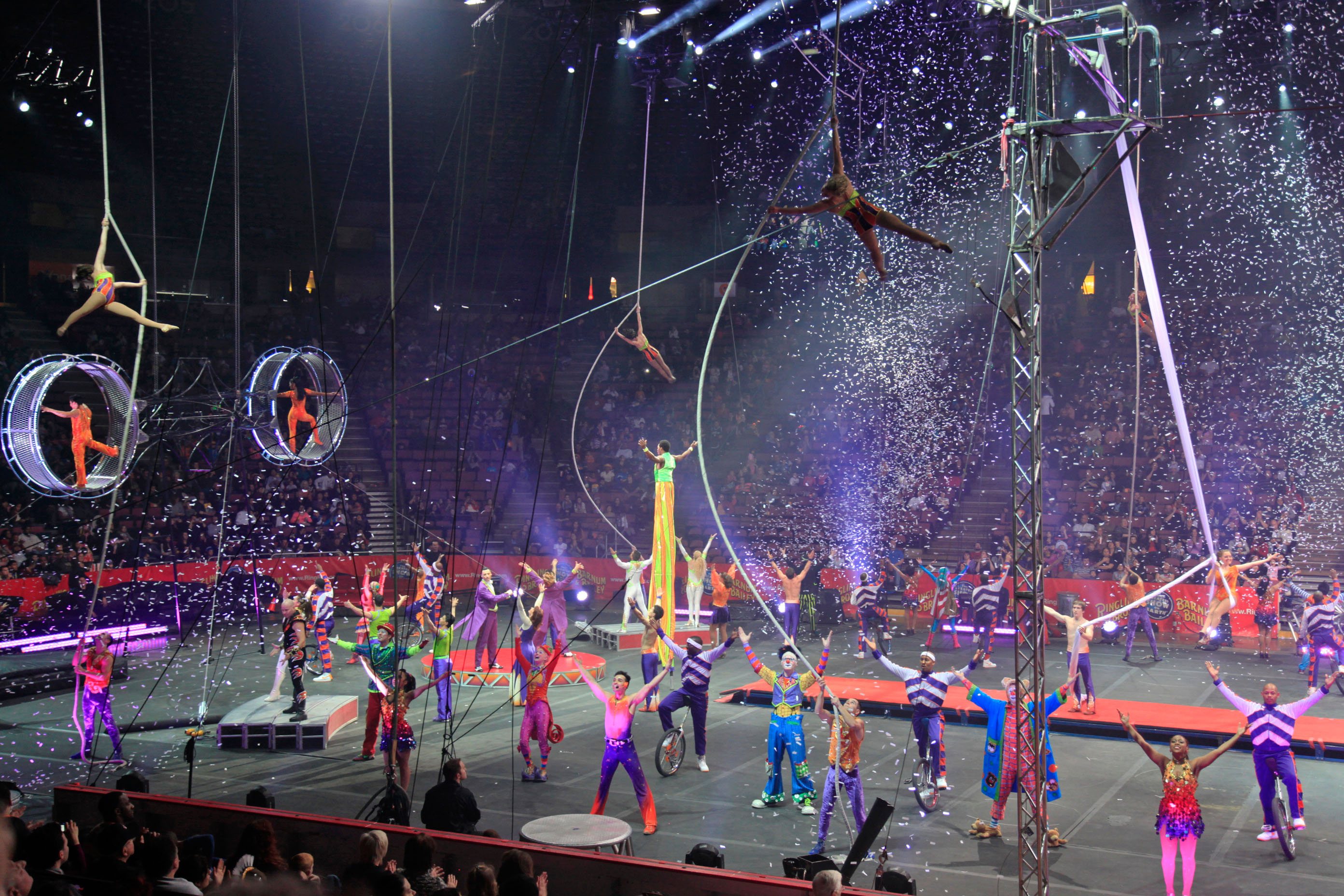
Audiences enjoy a circus for its pageantry and even more for its thrills and danger. Circus artists risk serious injury or even death by performing in cages with wild animals, flying through the air in a trapeze act, or walking on a wire high above the ground.
The circus is an international art form. A circus may include performers from throughout the world. A show might include acrobats from China, tumblers from Bulgaria, animal acts from Germany, high wire walkers from Spain, trapeze artists from Mexico, and clowns from the United States.
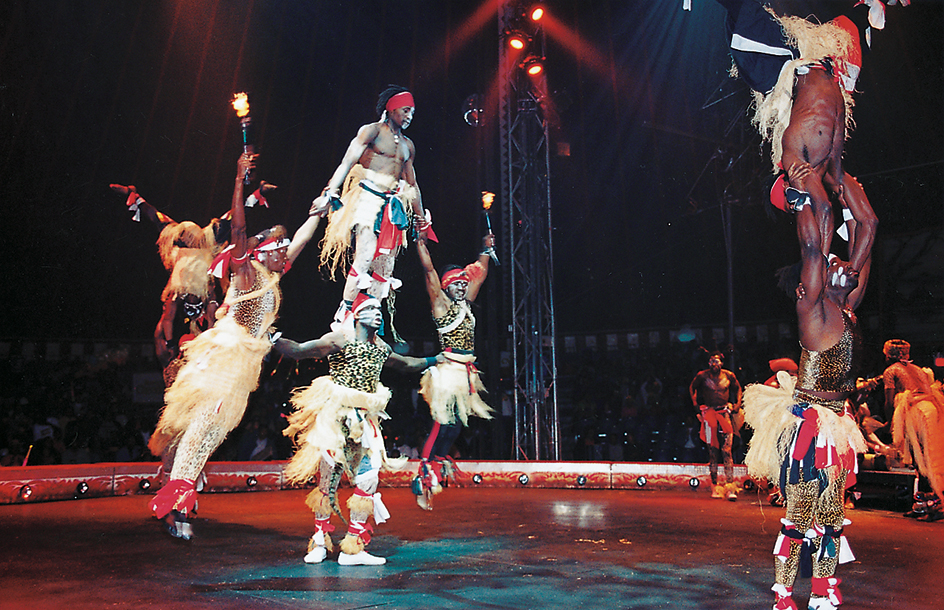
At the circus
Some traditional circus performances open and close with a production number called a spectacle. As the circus music is played, the ringmaster welcomes all, and performers in elaborate costumes parade in front of the audience. Such animals as camels, dogs, horses, llamas, and zebras may also take part in the opening number.
The show consists of circus acts, which take place in round areas called rings. A circus may have from one to three rings, though some circuses perform in an open area with no rings at all. In a three-ring circus, similar acts may appear in all the rings at the same time. These acts are known as a display. For example, three groups of acrobats may perform at one time, followed by three animal acts.
Loading the player...Circus music: Entrance of the Gladiators
Circus acts feature an astonishing variety of talent by people and animals. One circus artist may perform back flips on a high wire. A flyer gracefully somersaults through the air into the hands of another aerial artist, who hangs by the knees from a trapeze. Chimpanzees ride around the ring on bicycles, and dogs jump rope. Tigers leap through hoops. Liberty horses (horses without riders) dance around a ring and execute intricate maneuvers.

Clowns entertain the audience before and during the performance. In one popular clown gag, about a dozen clowns emerge from a tiny car. Clowns walk on stilts, ride unicycles, juggle, or perform short, silly pantomime plays.
Music is played throughout the show. Some circuses have a conductor and musicians, who can make quick adjustments in the music to follow the live action. Other circuses use recorded music. Circus music may range from traditional circus marches to jazz, blues, and rock music.
Behind the scenes
A number of people work together to stage a circus performance. An artistic director supervises the overall performance. A general manager oversees the planning of the show. A box office manager and agents are responsible for selling tickets. Marketers and promoters publicize the show to increase attendance. If a tent is used, a tent master is also needed.
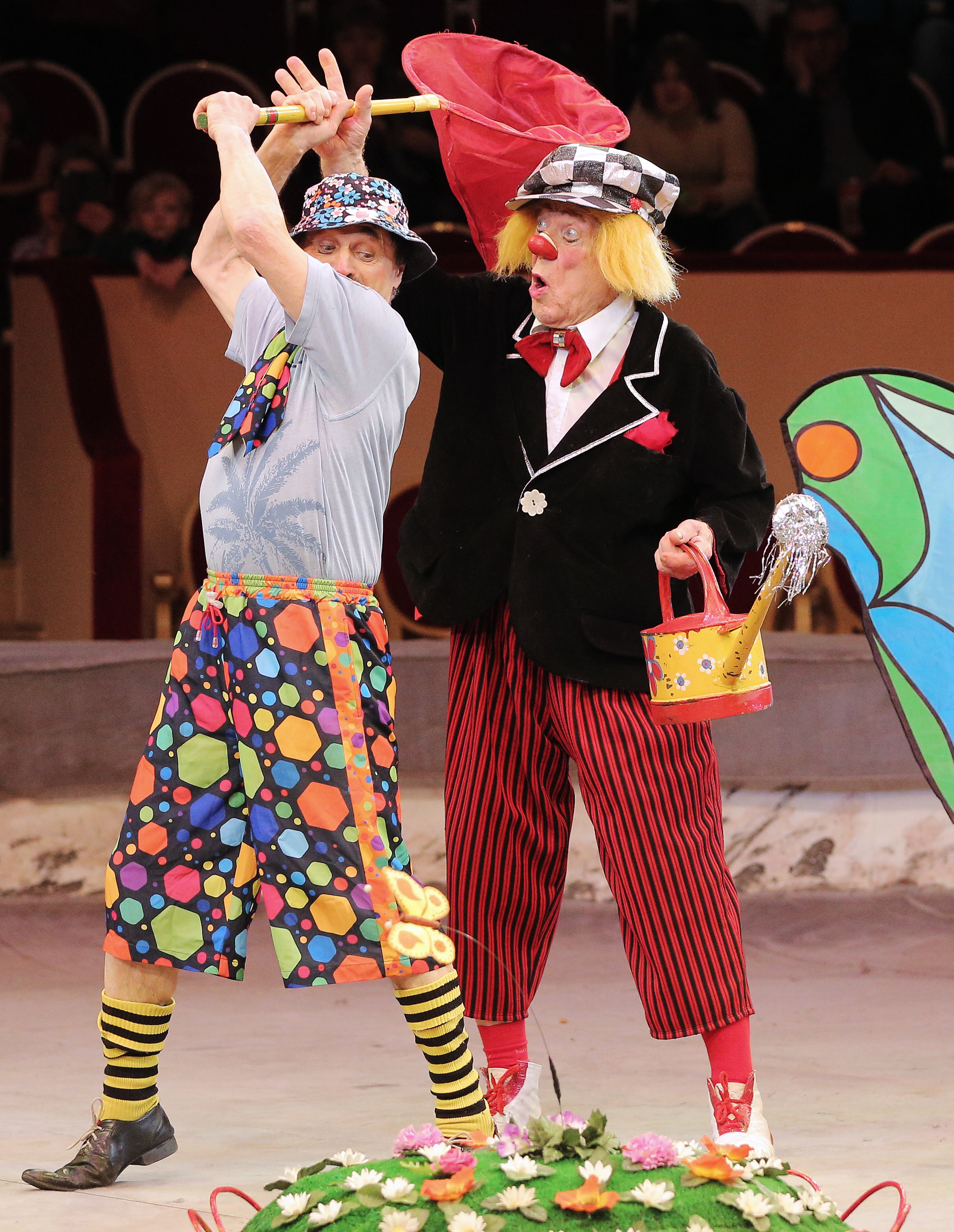
In the past, circuses traveled by wagon or train. Today, most circuses move from town to town by roads. The performers, staff, and workers travel and live in motor homes. Animals ride in specially designed stock trailers. Props and equipment are transported by large trucks.
Workers, once called roustabouts unload and set up the equipment for the various acts. They must quickly and efficiently erect and take down the equipment during a performance. After the last performance in a city, the workers pack all the equipment so it can be moved to the next location. Nothing can be left behind.
A traveling circus is like a small, self-contained community. The circus provides meals for the performers and workers that are prepared on site. A circus may also have its own barber, veterinarian, and doctor. If there is not a veterinarian or doctor on staff, the circus will contract with local professionals in each town to cover any emergency. In some cases, a circus will have a teacher to school children whose families work on the show.
Joining the circus
Before joining a circus, an individual must realize that the circus has its own lifestyle. A performer in a typical circus travels for much of the year, moving from city to city. Some circuses have two or three shows a day for five or six days every week.
For many years, most performers grew up in the circus, learning their skills from family members. Now a performer can join a circus by training for it. Some noted circus schools are supported by national governments. The Soviet Union had a tradition of training circus artists through state-supported schools, beginning with the Moscow Circus School, established in 1927. But many of these schools closed after the Soviet Union broke apart in 1991. Other countries still have state-supported training schools, including Le Centre National des Arts du Cirque (National Center of Circus Arts) in France and L’École Nationale de Cirque (National Circus School) in Canada. In the United States, people can learn circus skills at such universities as Florida State University and Illinois State University; at training schools sponsored by circuses; at clubs and Y’s (formerly Young Men’s Christian Associations, or YMCA’s); or at the many circus schools affiliated with the American Youth Circus Organization, such as the Circus Arts Conservatory in Sarasota, Florida, Circus Harmony in St. Louis, Missouri, and Circus Center in San Francisco, California.
History
Roots of the circus.
Many elements of the modern circus have existed for more than 4,000 years. For example, in 2500 B.C., circus-type performers, such as acrobats and balance artists, performed in Egypt. Acrobats jumped over bulls on the island of Crete by the 1500’s B.C. Performers spun plates on bamboo poles at a theater school in China in A.D. 714. Many aspects of the modern circus appear in ancient Greek culture. For example, the strong man and the comic mime, a forerunner of the clown, originated in ancient Greece.
Surviving examples of circus activity support the notion that the modern circus had its roots in ancient Rome. Chariot races took place in a round or horseshoe-shaped structure called a circus, the Latin word for circle or oval. These races eventually included circuslike entertainment. 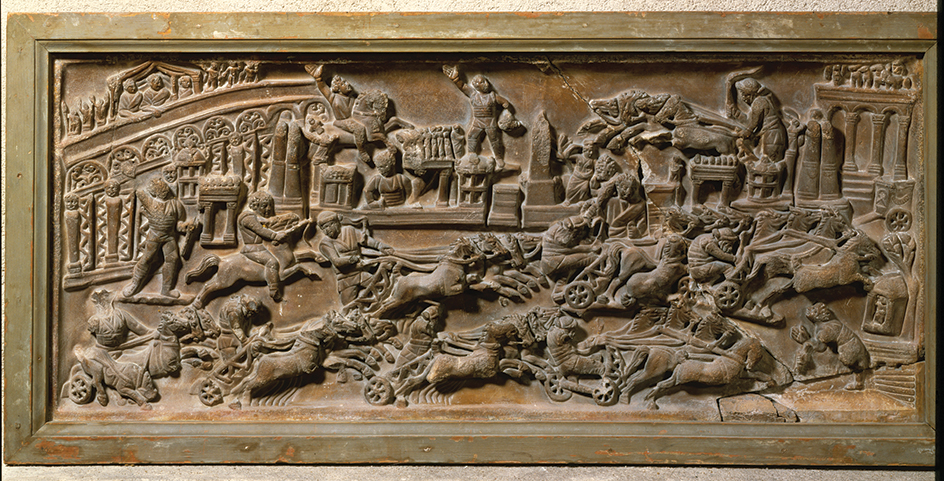
After the fall of the Roman Empire in the A.D. 400’s, entertainers called minstrels, troubadours, and jongleurs traveled throughout Europe, entertaining people with skills associated with the circus arts. In China, acrobatics is an ancient art form dating back thousands of years. It became an important form of entertainment at the court of the Han dynasty (206 B.C.-A.D. 220). In the Chinese classical theater, the white-faced clown became one of the four basic types of roles in Chinese drama. In the 1400’s, plays in China included people jumping through hoops lined with swords, or turning somersaults on a ladder.
The birth of the circus.
The modern circus was developed in England by Philip Astley, a former sergeant major of the British Cavalry. In 1768, Astley opened an equestrian (horseback riding) school in London. He taught riding in the morning and performed “feats of horsemanship” in the afternoon. Astley performed in a circular area later referred to as the ring. After two years of demonstrating his “feats of horsemanship,” Astley added other entertainment. Between riding acts, he inserted performers who juggled, walked a tightrope, or demonstrated acrobatic skills. He also added a clown. By combining these elements of entertainment, Astley founded the modern circus. 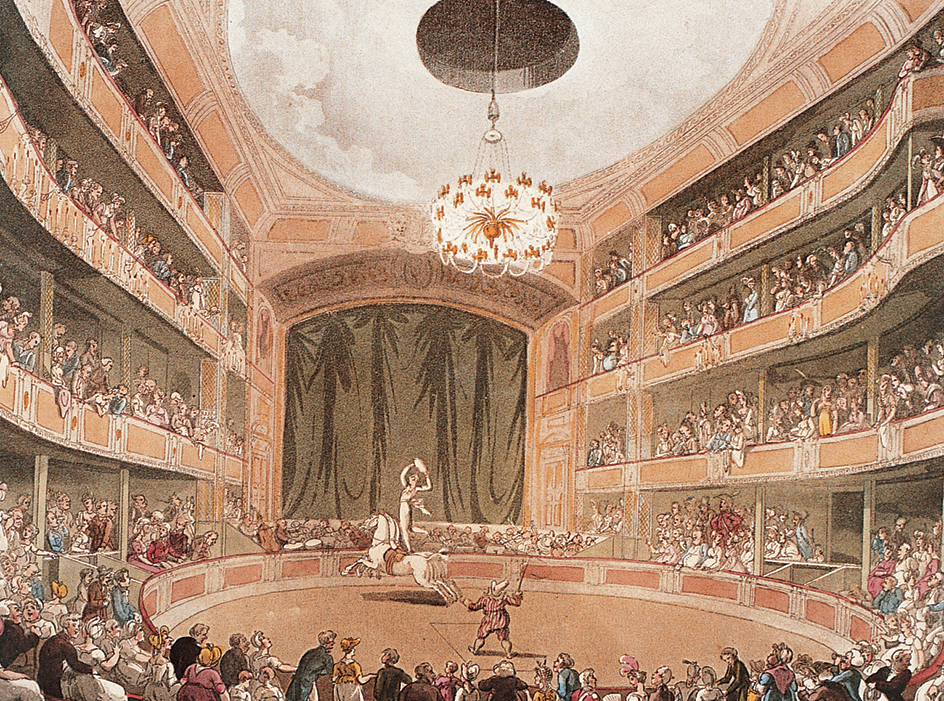
In 1782, two Englishmen, a riding teacher named Charles Hughes and a dramatist and composer named Charles Dibdin, opened an equestrian school that rivaled Astley’s. The men called their school the Royal Circus and Equestrian Philharmonic Academy, the first time the word circus was used to refer to a combination of equestrian and other acts.
In 1793, Hughes traveled to Russia at the invitation of the Empress Catherine the Great. He introduced the circus at the empress’s court in St. Petersburg, and the new form of entertainment quickly spread throughout Russia.
Also in 1793, Hughes’s student John Bill Ricketts opened the first American circus in Philadelphia. Ricketts established the first Canadian circus in Montreal in 1797. Philip Lailson, a British equestrian, introduced the circus to Mexico in 1802.
The circus grows.
By the early 1800’s, the circus had spread throughout Europe and the United States. The first circus performances took place in temporary wooden structures. Soon, however, almost every major city in Europe had at least one permanent building for the circus. Some circuses in the United States also had permanent structures.
As the European circus developed in permanent buildings, the circus in the United States took a different path, because audiences had begun to move westward. Joshuah Purdy Brown revolutionized and Americanized the business of circus in 1825 when he presented his show under a canvas tent. Using the turnpikes and canals, the circus could now travel to more places using this portable structure.
Brown came from the area of Somers, New York, which has been called the “cradle of the American circus.” In Somers, a cattle dealer named Hachaliah Bailey bought an African elephant and exhibited it. The popular response to the elephant led Bailey to import more animals from other countries and create a traveling menagerie. Perhaps the most famous menagerie of the early 1800’s, called the Zoological Institute, had been formed in the Somers area. By the 1830’s, the traveling circus and menagerie business had begun to merge.
The American circus started with single acts in one ring and gradually developed into three or more rings. By the end of the 1800’s, methods of travel for the circus varied from horse-drawn wagons to riverboats and to railroad trains. In 1868 and 1869, a circus and menagerie owned by Dan Castello, a former clown, became the first circus to make a transcontinental tour, much of it by rail.
The Greatest Show on Earth
was the name given to his circus by the American promoter and showman P. T. Barnum. Barnum had joined with circus owners Castello and William C. Coup to form P. T. Barnum’s Grand Traveling Museum, Menagerie, Caravan and Circus in 1871. Along with the circus performances, this show exhibited animal and human oddities, which eventually became a standard part of the American circus known as the side show.
Barnum imported the African elephant Jumbo to the circus from the London Zoo in 1882. The animal became a sensation. In fact, the name of the huge elephant is the source of the word jumbo, which means something that is very large. The circus also staged large street parades to promote its shows. After a circus arrived in town, a procession of performers, animals, and brightly painted wagons drawn by teams of horses would parade down the main street to attract people to the performances.
The circus goes international.
During the mid-1800’s, the circus expanded to many parts of the world. In 1836, Thomas T. Cooke, an English showman, visited the United States. When he returned to England in 1840, he took with him the idea of the circus tent. An Italian showman named Giuseppe Chiarini managed a touring circus that traveled throughout the world. An English-born equestrian named Robert A. Radford established the first true circus in Australia, Radford’s Royal Circus, in 1847. A French equestrian, Louis Soullier, introduced the circus to China in 1854. When he returned to Europe in 1866, Soullier introduced such Chinese acts as perch-pole balancing, plate spinning, and juggling.
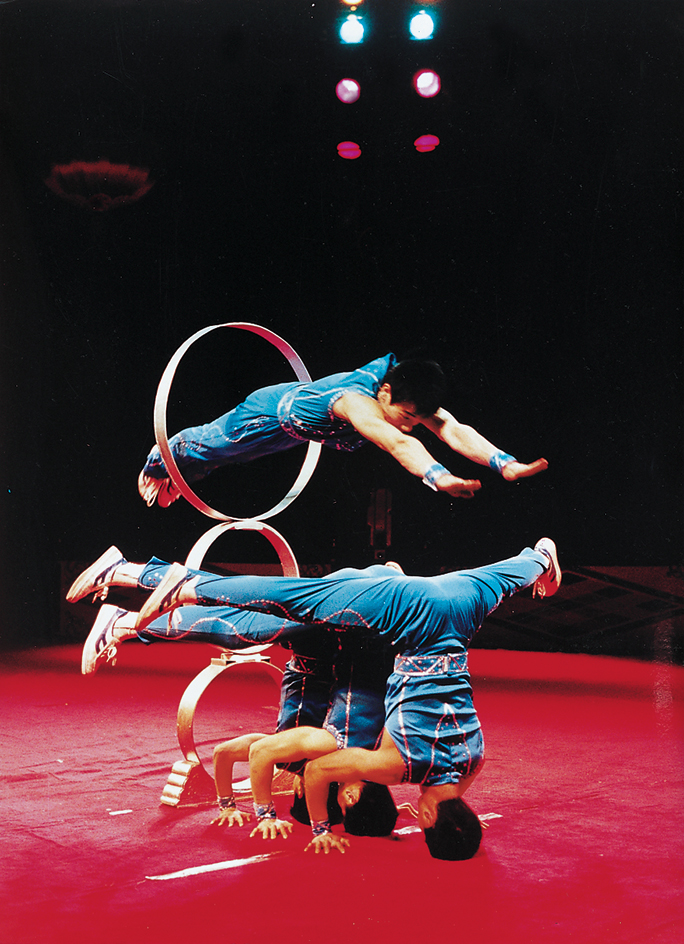
Following the death of P. T. Barnum in 1891, a showman named James A. Bailey, Barnum’s partner, became the sole owner of the circus. In 1897, he transported the entire show to Europe for a tour that lasted until 1902. During this tour, European circus owners were amazed at how easily Bailey’s circus could be loaded, set up, torn down, and moved. Bailey’s show traveled on specially designed trains.
The Ringling Brothers.
After Bailey returned to the United States in 1902, he discovered that he had serious competition from the five Ringling brothers from Baraboo, Wisconsin. The brothers presented their first show in 1884. They hired an old showman named Yankee Robinson to lend his name and advise them. The show was named Yankee Robinson and Ringling Bros. Great Double Shows, Circus and Caravan, but the Yankee Robinson name was used for only one season. This was the only time that the Ringling name took second billing.
By 1892, the Ringling Bros. Circus was traveling to 12 states and the Oklahoma Territory on 31 railroad cars and presenting its show in a tent larger than a football field. After Bailey’s death in 1907, the Ringling brothers purchased the Barnum and Bailey Circus, the Greatest Show on Earth. They combined it with their own show in 1919 to form Ringling Bros. and Barnum & Bailey Combined Shows, The Greatest Show on Earth.
The Golden Age
refers to the period in circus history from the 1870’s through the 1920’s. The circus reached a peak of popularity and cultural importance during this time. Along with the Barnum and Ringling Brothers productions, large traveling circuses of the Golden Age included the Cole Bros., Hagenbeck-Wallace, and Sells-Floto circuses in the United States; Lord George Sanger’s Circus, Bertram Mills Circus, and Chipperfield’s Circus in the United Kingdom; and the Wirth Bros. Circus in Australia. 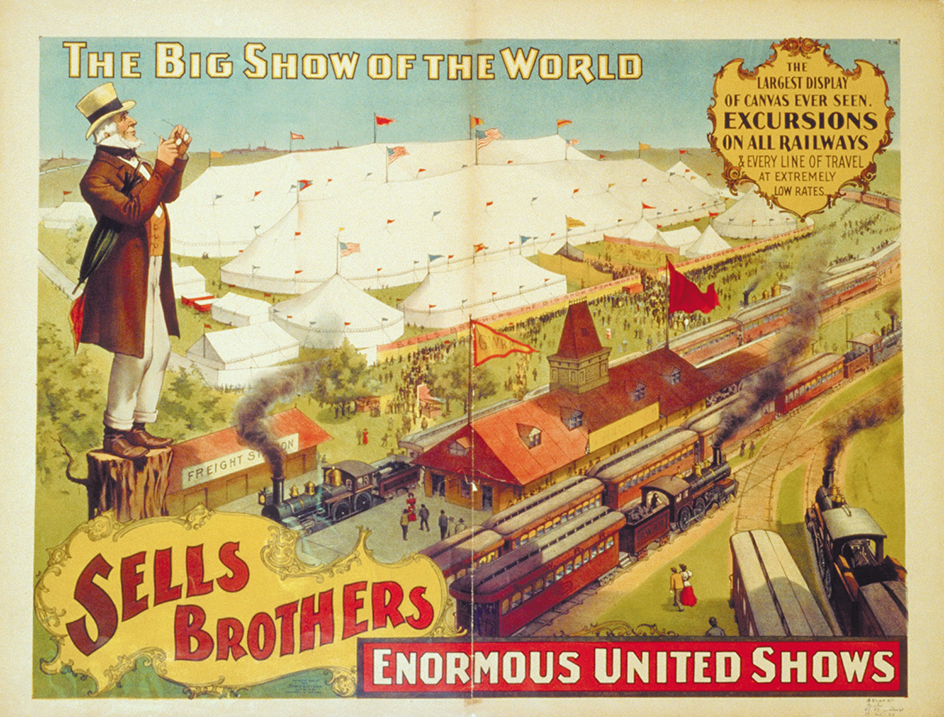
During the Golden Age, circuses grew dramatically in size and scale. The tented circus expanded from one to three rings. The main performance tent swelled to an enormous size to accommodate the multiple rings and to increase the seating capacity, which improved the profitability of the entertainment enterprise. The performance tent became known as the big top. The largest big top was raised by Ringling Bros. and Barnum and Bailey Combined Shows during 1919 and 1920. It was a colossal 200-by-500-foot (61-by-152-meter) canvas tent. More than 12,000 people could enjoy a single show.
As tents grew longer and wider, they also grew taller to allow for aerial acts. At the same time, because of the great size of the tent, singing and talking clowns began to fade away and clowns turned to slapstick comedy.
The stronger, larger circuses bought out many of the smaller shows. By 1929, for example, virtually every major circus in the United States was owned by the American Circus Corporation, a company based in Peru, Indiana, or by Ringling Bros. and Barnum & Bailey Combined Shows led by John Ringling, the last of the original founding brothers. In 1929, Ringling purchased the American Circus Corporation, making him the undisputed king of the American circus.
The middle and late 1900’s.
The Great Depression of the 1930’s led to a decline in circuses. Many circuses went out of business or combined with other shows during the difficult economic times. The circus also faced competition from new forms of entertainment, first motion pictures and then television.
In 1956, the Ringling Bros. and Barnum & Bailey Circus abandoned the big top. Starting with the 1957 season, it became an arena rather than a tent show. In 1967, the Ringling Bros. circus was purchased by the businessmen Roy Hofheinz, Israel Feld, and Irvin Feld. To preserve the art of clowning, Irvin Feld established the Ringling Bros. and Barnum & Bailey Clown College in 1968, which operated until 1997. In 1969, Feld created a second unit for the circus by obtaining the Circus Williams of Germany, thus acquiring the talents of the animal trainer Gunther Gebel-Williams. Gebel-Williams later came to be known as the Lord of the Rings. 
Since the early 1800’s, about 2,000 circuses have come and gone in the United States alone, and hundreds more in other countries. Many of these shows failed to keep up with changes in circus production, the economy, or competition from other forms of entertainment. Nevertheless, the circus arts continued to evolve.
The circus today
The early 2000’s and 2010’s were hard on the circus industry. Some circuses closed, or changed their shows to better suit contemporary audiences and culture. In 2016, the Cole Brothers Clyde Beatty Circus closed. The Ringling Bros. and Barnum & Bailey circus stopped performing in 2017. However, in 2023, a reimagined Ringling Bros. and Barnum & Bailey circus began performing without animal acts and with a greater focus on human performers.
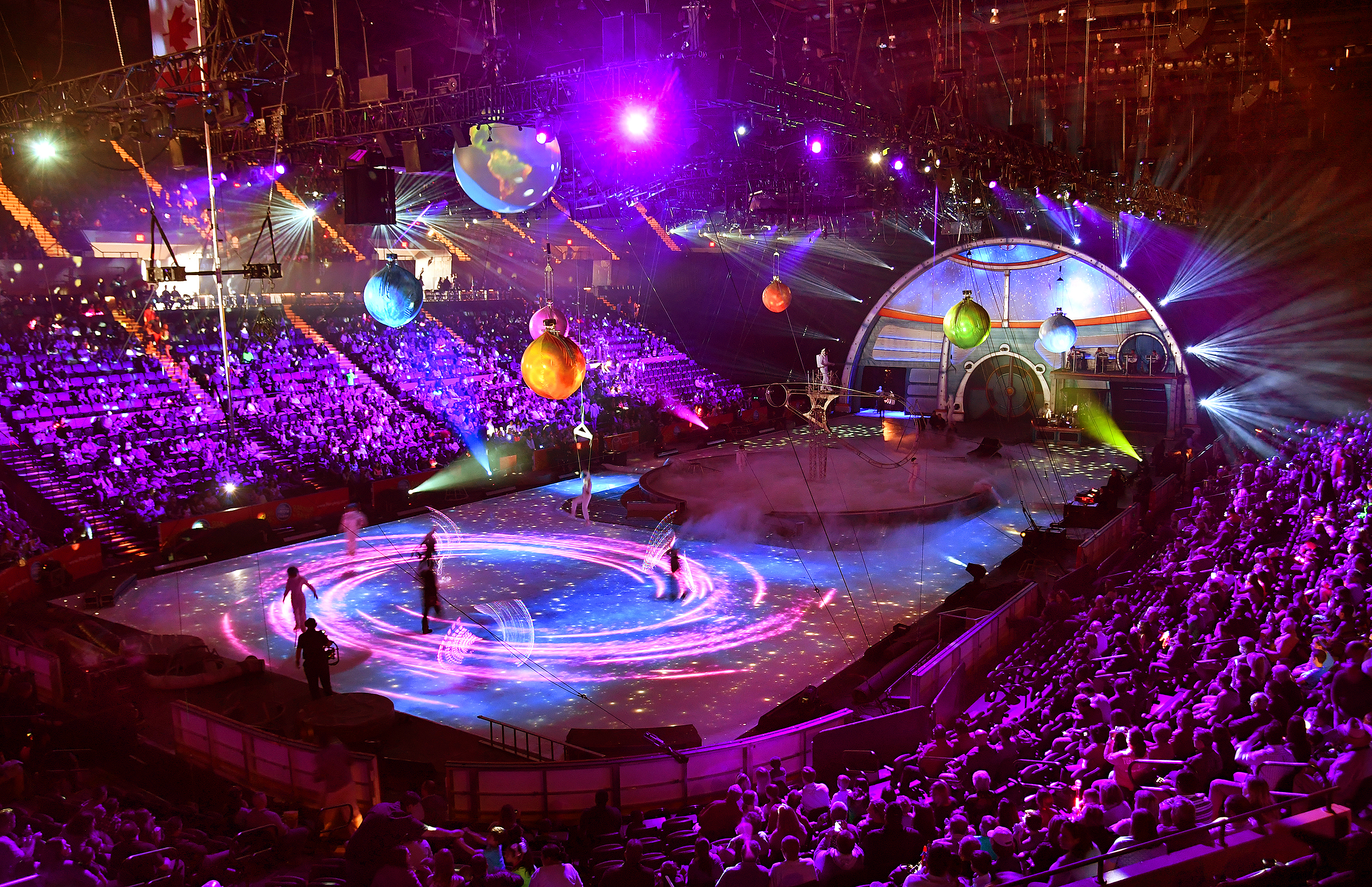
The circus today survives in two major forms, traditional circuses and contemporary circuses. In the United States, a number of traditional circuses continued to perform in the 2000’s, including the Big Apple Circus, Kelly Miller Circus, Carson and Barnes Circus, and Circus Vargas. Traditional circuses in other countries include Billy Smart’s Circus and the Blackpool Tower Circus in the United Kingdom, Fossett’s Circus in Ireland, and Circus Joseph Ashton and the Lennon Brothers Circus in Australia. Some long-established traditional circuses, such as the Chinese State Circus and the Great Moscow State Circus of Russia, travel to many countries.
Many contemporary circuses are intimate shows, performed in a single ring under a tent or in a cabaret or theater. Many omit the spectacle of larger circuses. Some of the best-known contemporary circuses include Circus Oz, started in Melbourne, Australia, in 1978; Cirque du Soleil (Circus of the Sun), begun in Quebec City, Canada, in 1984; Circus Flora, founded in Camden, South Carolina, in 1985; and the UniverSoul Circus, begun in Atlanta, Georgia, in 1994. Circus Oz includes offbeat humor, political jokes, and social satire in its acts. Cirque du Soleil, now based in Montreal, Canada, has no animals, only human performers. Live vocalists sing its music in an invented language. Its productions emphasize modern technology, with striking special effects and imaginative, often bizarre costumes. Some of Cirque du Soleil’s shows continually tour the world, while other productions reside in permanent theaters in several cities. Circus Flora is a traveling one-ring show that now makes its home in St. Louis under its parent organization, the Circus Arts Foundation of Missouri. The UniverSoul Circus brings together the best acts from around the world with a large number of performers of color. 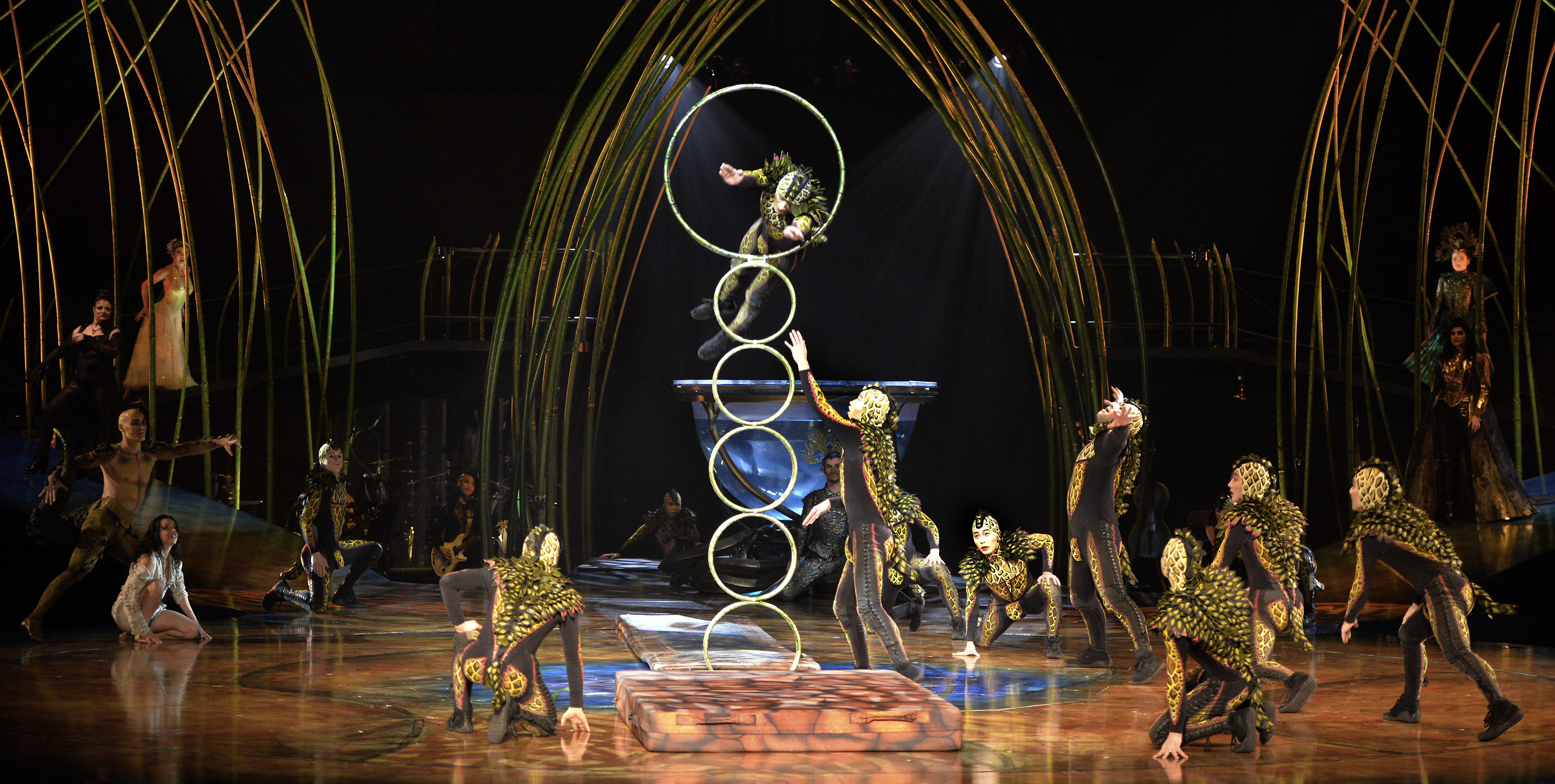
The contemporary shows, with their fresh approach to the circus arts, have had a profound effect on the circus industry. Some critics credit these circuses with improving the quality of other circuses in their lighting, music, costumes, pacing, and mix of acts, as well as with focusing attention on the daring and drive of the performers.
Places to visit and annual events
Several important museums and circus collections exist throughout the United States. The Circus Museum at the John and Mable Ringling Museum of Art in Sarasota, Florida, founded in 1948, was the first museum in the United States established to document the rich legacy of the circus and to showcase the history of the circus from its earliest roots to the present. Exhibitions include wagons and posters. The museum is also the home of the Howard Bros. Circus Model, a huge miniature circus that represents the Ringling show from 1919 to the 1950’s.
Circus World is a museum, library, and research facility in Baraboo, Wisconsin, the original home of the Ringling brothers. Part of the museum is housed in the original headquarters of the Ringling circus. The museum exhibits the largest collection of circus wagons in the world. Circus World also has an extensive library and research center devoted exclusively to the circus.
The Barnum Museum in Bridgeport, Connecticut, owns many objects that belonged to the great showman P. T. Barnum.
There are several museums in Europe that celebrate the history of the circus arts. The Museum of Circus Arts in St. Petersburg, Russia, was the first circus museum in the world, founded in 1928.
Important American circus research collections are located in the Milner Library at Illinois State University, the New York Public Library in New York City, the Library of Congress, and at Harvard and Princeton universities. Many of the museum and library circus collections are available online. In the United States, the Circus Historical Society and the Circus Fans Association of America celebrate the circus arts. Similar organizations serve the same purpose in other parts of the world.
The International Circus Festival of Monte Carlo in Monaco ranks as perhaps the most important circus festival in the world. The festival presents awards to outstanding circus acts that are considered the Academy Awards of circus performance. The festival’s highest award is the Golden Clown. Under the sponsorship of the festival, the Fédération Mondiale du Cirque was started in 2008. The organization brings together the international circus community to preserve and promote circus art and culture throughout the world.
The Circus City Festival in Peru, Indiana, is held every July. Young people from the ages of 7 to 21 present performances over an eight-day period.
Started in 1977, the Worldwide Festival of the Circus of Tomorrow in Paris is held every year to promote young circus performers. The festival features performers in two age groups—Circus of the Future (ages 12 to 18) and Circus of Tomorrow (ages 19 to 25). The International Circus Festival in Budapest, Hungary, celebrates the circus arts and features international circus artists. The International Circus Festival of Italy holds an annual competition in the city of Latina. Every two years, the European Youth Circus meets in Wiesbaden, Germany, to present circus arts in competitions.
